Trending
Opinion: How will Project 2025 impact game developers?
The Heritage Foundation's manifesto for the possible next administration could do great harm to many, including large portions of the game development community.

Featured Blog | This community-written post highlights the best of what the game industry has to offer. Read more like it on the Game Developer Blogs or learn how to Submit Your Own Blog Post
Ever wondered where game ideas come from? This is a story of our journey from an idea tossed out at lunch to a final bit of new gameplay.

Letter Rush was a bit of a passion project for us. We wanted to build something quickly to gain momentum as a team and practice our development process and App Store release process. There was no reason for us to build innovative gameplay in Letter Rush, we could have simply made a clone of an existing word game and it would have accomplished all the goals I listed above (and could have possibly been more successful). Innovating on gameplay is important to us, and we needed to flex that muscle along with everything else.
The genesis of the game came when we were discussing games that we could make fast that had not shown up on iOS yet. One of the ideas tossed out was to make Typing of the Dead for mobile, or Texting of the Dead (get it?). This idea inspired me to start thinking about a prototype.
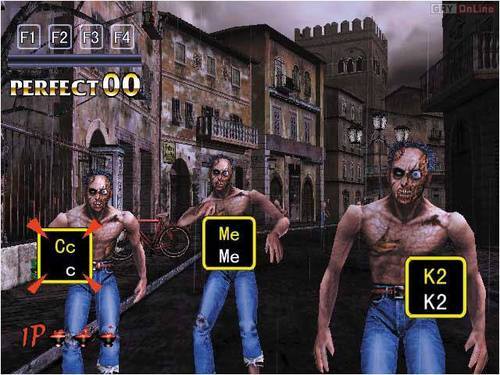
When I looked at Typing of the Dead I tried to breakdown what parts of the gameplay make it fun and interesting. I played the game for a few hours and took notes on what I liked (see a youtube video of gameplay here). This is what I came up with:
Typing out the words as they show up is a repeatable and fun mechanic, it never gets old
The player can get better at typing to gain mastery of the game, the player learns something while playing
The strategy of choosing which word to type first works very well and made me feel smart
Difficulty can be ramped up by putting more words on screen, making the words longer or making the Zombies faster
This all seemed to translate well into a game that had a repeatable mechanic with interesting strategy and plenty of room to scale difficulty. There were only two issues left to tackle: making 3D zombies is a lot of work and typing on a virtual keyboard on an iPhone is not fun or elegant. Luckily for me, the theme question was not one I needed to answer in the prototype, but the keyboard one was.
Below is an image I sent the to the rest of the team on my idea to make the game work for mobile. (Warning: It is ugly)
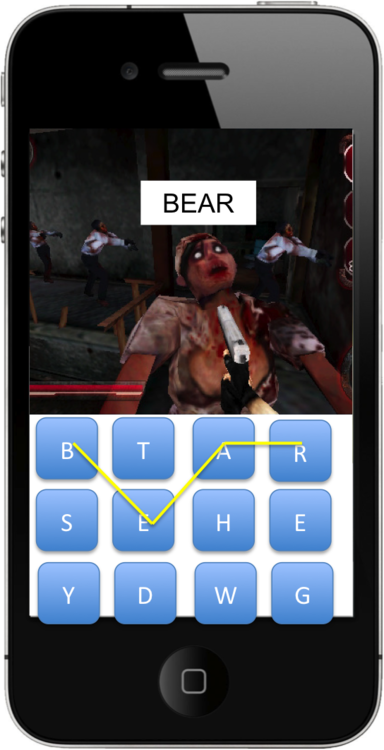
As you can see, the idea was to swipe the words as they appear. The skill was not in how quickly you could type the words, but in how fast you could find the words. I was hoping it would feel a little like Boggle, but I needed to build a prototype to find out. Below is a screenshot of that prototype.
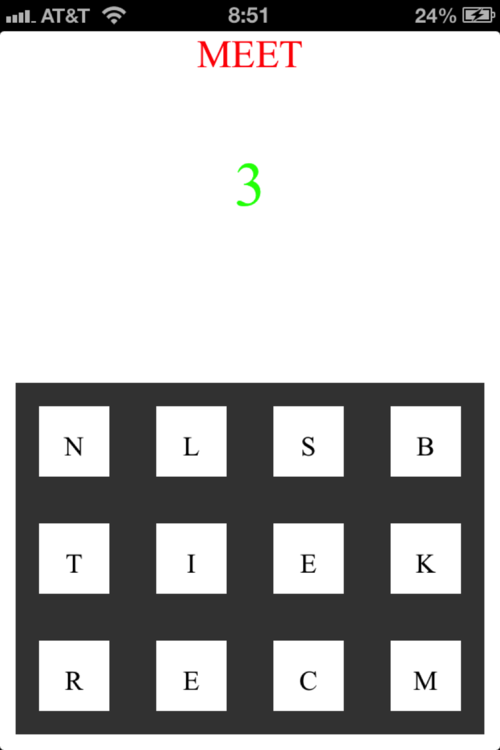
I built this in a day, the board was hard coded and there were only 12 words that would show up randomly. The number in the middle is the time left to spell the word, if the time expires a new word shows up. The player gets 10 points for every word they spell, plus a multiplier for how much time is left when they complete the word. If the player gets to 100 points they win.
This was the point of innovation for the game. The switch from using typing as the primary action to using a swiping word-find completely changed the feel of the game. Most of the other mechanics, at their core, did not really change from Typing of the Dead.
This version of the game was sent to the team and they had a chance to try it. It turns out that this was actually sort of fun. At this point Dan Ogles, our CTO, built out a fully playable version of this prototype with randomized boards and more words. I put a screenshot of that prototype below.
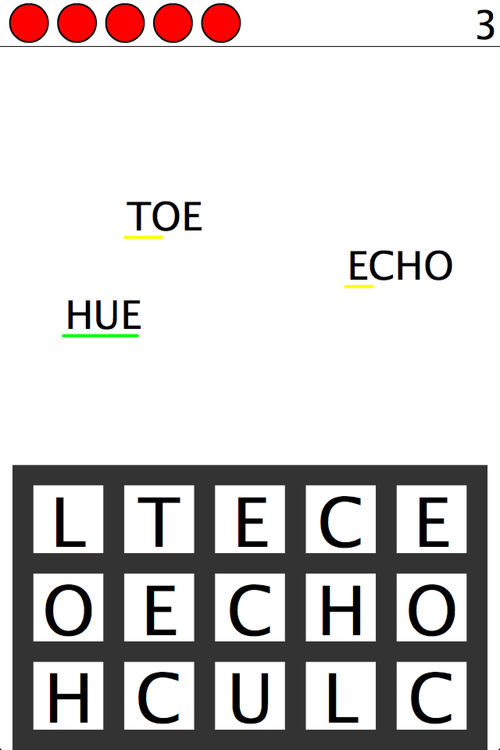
From here we continued to iterate over the course of about two months to release the final version of Letter Rush (pictured below). As you can see, we came a long way from the Texting of the Dead idea but that is how we create gameplay. We start somewhere and iterate on the concept until we are happy with it. Breaking down a game to the core elements gives the rare material needed to rebuild a new game from scratch.
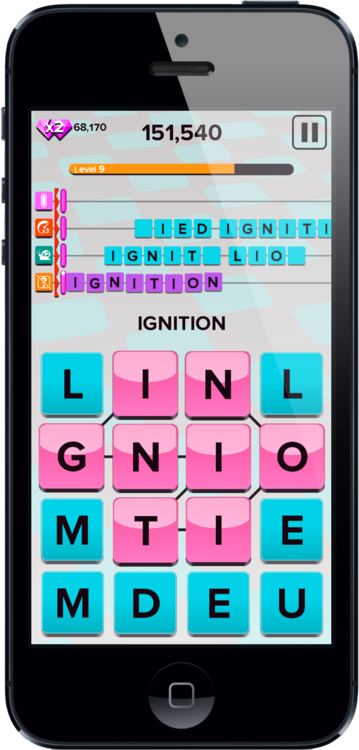
(if you are curious about how many major gameplay iterations it took to get to the final product I counted about 16, at some point I will go back and screenshot all of them)
Read more about:
Featured BlogsYou May Also Like